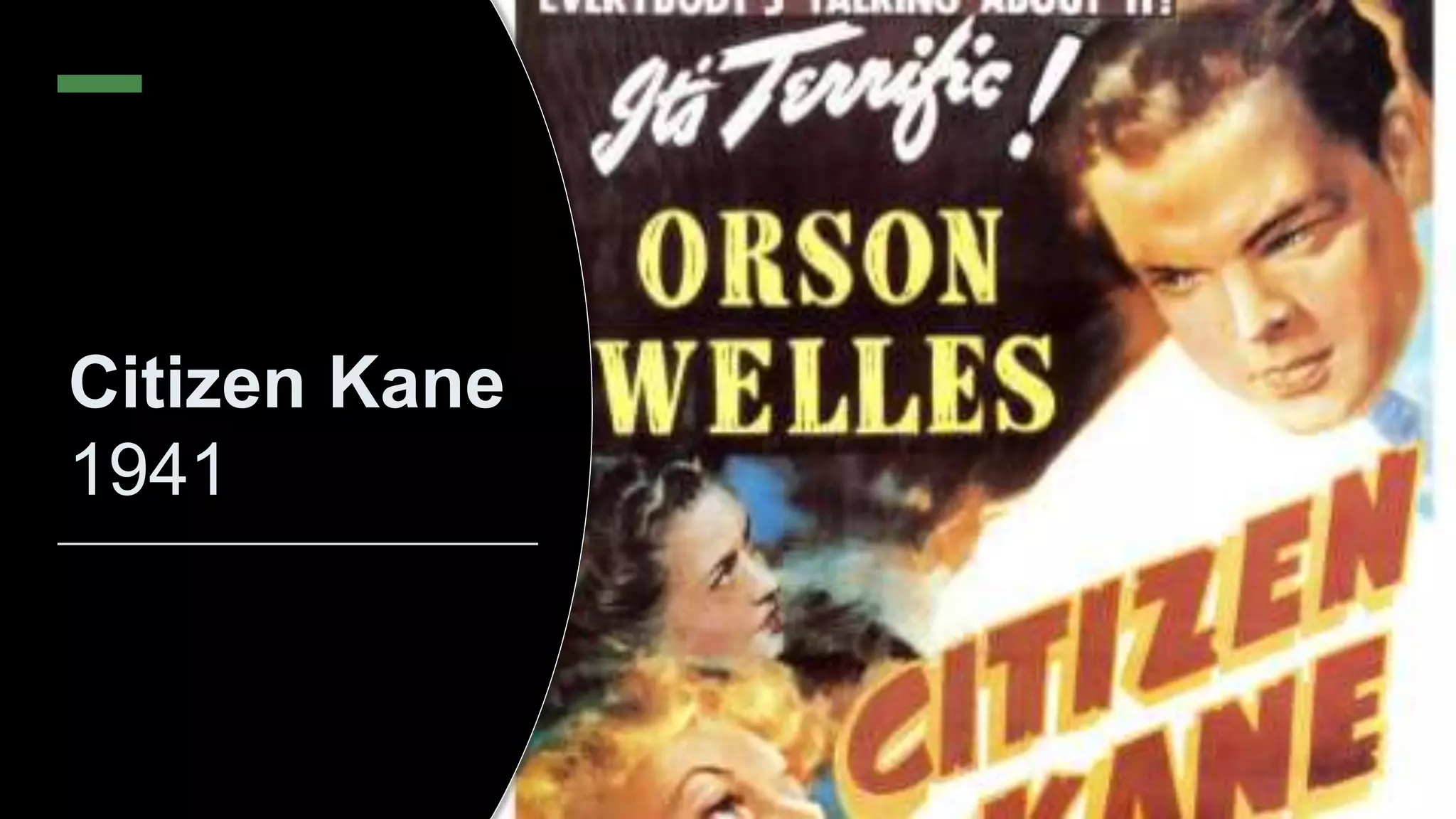This document provides an analysis of the 1941 film Citizen Kane, directed by Orson Welles. It discusses Welles' career leading up to the film, including his success in theatre and controversial radio broadcast. It notes that at age 25, Welles wrote, directed and starred in Citizen Kane, which was based partly on the life of newspaper magnate William Randolph Hearst. The film used innovative cinematic techniques like deep focus photography and nonlinear flashbacks. Though it was a critical success, Hearst tried to suppress the film due to its portrayal of his life. The document analyzes various political themes in the film, like the corrupting influence of power and money, and examines its depictions of journalism, politics and the limits of influence

















